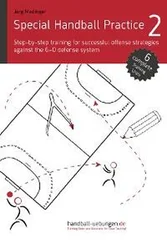Christian Horak - The CommFlow System
Здесь есть возможность читать онлайн «Christian Horak - The CommFlow System» — ознакомительный отрывок электронной книги совершенно бесплатно, а после прочтения отрывка купить полную версию. В некоторых случаях можно слушать аудио, скачать через торрент в формате fb2 и присутствует краткое содержание. Жанр: unrecognised, на немецком языке. Описание произведения, (предисловие) а так же отзывы посетителей доступны на портале библиотеки ЛибКат.
- Название:The CommFlow System
- Автор:
- Жанр:
- Год:неизвестен
- ISBN:нет данных
- Рейтинг книги:5 / 5. Голосов: 1
-
Избранное:Добавить в избранное
- Отзывы:
-
Ваша оценка:
- 100
- 1
- 2
- 3
- 4
- 5
The CommFlow System: краткое содержание, описание и аннотация
Предлагаем к чтению аннотацию, описание, краткое содержание или предисловие (зависит от того, что написал сам автор книги «The CommFlow System»). Если вы не нашли необходимую информацию о книге — напишите в комментариях, мы постараемся отыскать её.
The CommFlow System — читать онлайн ознакомительный отрывок
Ниже представлен текст книги, разбитый по страницам. Система сохранения места последней прочитанной страницы, позволяет с удобством читать онлайн бесплатно книгу «The CommFlow System», без необходимости каждый раз заново искать на чём Вы остановились. Поставьте закладку, и сможете в любой момент перейти на страницу, на которой закончили чтение.
Интервал:
Закладка:
(1) Status
(2) Certainty
(3) Autonomy
(4) Relationship
(5) Fairness
These 5 criteria are easily remembered with the acronym SCARF, and although they are listed from 1 to 5, they always get evaluated concurrently, not necessarily one after the other. Let’s drill down a bit.
(1) Statusmeans that the brain, (which is always looking for ways to increase security, power and ways to have fun) will scan each situation and immediately evaluate the situation in terms of its impact to the social standing of the person. If the status is threatened, you get a threat-response, and not much clear and unimpeded communication after that.
(2) Certaintymeans that the brain will always check if the situation is stable or at least reasonably predictable. If things look too flaky, again, you get the threat response and the listening process pretty much stops at that point.
(3) The same mechanism is then applied to Autonomy, to evaluate how much flexibility is available in the situation. When people feel "cornered", they again will be forced into a threat response by the social brain.
(4) The same is true when relationshipsare threatened, or even if things seem to break the common sense around (5) fairness. You should easily be able to see how this automatic evaluation by the social brain can stop a conversation dead in its tracks. This is even made more complex when we are trying to communicate across cultures, where questions of status and relationship can be vastly more complicated that in our fairly homogenous western culture. The same applies when we are communicating under pressure. An excellent in depth treatment of this subject around the SCARF model and the Social Brain can be found in David Rock's article for the NeuroLeadership Journal. Here is the link to David's excellent work. http://www.your-brain-at-work.com/files/NLJ_SCARFUS.pdfSo, what can you take away from this for your everyday communications situations? A) Remember the SCARF acronym
B) When you begin a communication, try to think about how you can acknowledge or reaffirm the persons status in the situation, how you can create a stable and predictable environment, how you can give the person you are communicating with more options to respond, how you can tie into the community and culture of the individual to increase the feeling of relatedness and, last but not least, how you can maintain fairness in the situation.
Just following the 2 points above has helped me almost immediately after learning about the SCARF approach. As I continue to develop this book, I will also add specific examples on how to apply this to everyday situations such as giving performance feedback to an employee, or trying to influence a purchase decision, or even when having a simple chat at dinner with an old friend.
Chapter 3: The Seven keys to communication flow. (Becoming a communication black belt)
In the past it was quite common for most everyone to get trained in a martial art at some level. Be it the use of blades or fire arms, be it the use of your hands and feet, or sticks or stones, getting trained in attack and defense was quite common. Tournaments were available to showcase your fighting skills. Thank goodness, we don't need to expect to be engaged in armed conflict or duels as much as in the past, and the martial arts have largely become a recreational activity. So even today, many people still go through formal training in a martial art, acquiring "belts" in Judo, Karate, Kendo or other disciplines. Yet, while in today's age we don't any longer tend to throw down the gauntlet or meet at dawn to settle our disagreement in duels, we are constantly and increasingly engaged in communication "wars" and "duels". We are fighting for attention, struggling towards persuasion or decisions, and are generally stumbling from misunderstanding to misunderstanding, both at a professional and private level.
It has been very surprising to me to see that there is no martial art level training is available for communications excellence. No general test for "communication fitness" Yes, granted, there are 1000's of training programs available for the individual sub-disciplines of communication: Books and classes on how to sell, how to persuade, how to present, how to negotiate, how to train, how to coach, etc. And surely some of these programs are being run, written or taught by true masters of their art.
However, the surprising thing is, there is no "belt system" available, no system of global schools or “DoJos”, no lifelong master-apprentice relationships, etc. How can it be that one of our essential skills that elevates us above the rest of the animal kingdom is so grossly under-represented in the training field?
Having observed this lack of structured "belt-system" approach throughout my entire career, I had begun collecting my thoughts quite a while ago in the late 1990ies. Then, recently, I discussed the idea again at a dinner in Palo Alto, and, after received quite a lot of encouragement, I considered it time to try to create such a structured communications learning system. The name I have chosen is the CommFlowSystem, to denote the fact that this should be about establishing smooth communication flows. But the name is surely not the most significant element of the idea, and it might change again as I receive feedback on my approach.
The main idea is to aggregate and simplify the different aspects of communication around 7 key areas. These 7 areas act as "keys" to communication "locks" or barriers to flow. It is not enough to have only one key. Any communication interaction usually requires us to use most - if not all - of these keys at the same time, to fully "unlock" the gates of understanding and agreement. Most of the time, many of us use these keys intuitively. But many times, when communication breaks down, we don’t really know why we cannot get our point across. It could well be that we are not aware which specific communication locks have not been opened.
The seven key areas are:
(1) Community, or how to establish common ground with the target audience (2) Intent, or how to choose the right tools for the purpose and intended outcome(s) of the communication (3) Coherence, or how to apply ALL means of communication available in a consistent fashion (4) Clarity, or how to remove confusion, clutter and waste in your communication (5) Feedback, or how to establish a bi-directional flow in the communication (6) Flexibility, or how to maintain flexibility in the communication to achieve flow (7) Influence, or how to change the state of the communication in the desired direction The next 7 chapters will drill down into each of the areas to explain why the key is important to establish a communications flow and a few tips and tricks in each area.
Chapter 4: Community
Community is the first of the 7 keys of the CommFlowSystem I would like to address. As a reminder, the 7 keys are Community, Intent, Coherence, Clarity, Feedback, Flexibility, and Influence.
At this point you are probably asking. Why 7 keys, and not 5 or 10? Why these names? The answer is fairly simple. I like the number 7. It’s not quite 10, but substantially more than 3. And it gives me enough wiggle room to put the main communication aspects into the most appropriate chapter. Just like a belt system in Karate, there is a finite number of belts (keys), but an infinite level of skill you can achieve once you have achieved the black belt certification which proves you have mastered all the basics. In the CommFlowSystem, the equivalent of a Black Belt is being able to use all 7 keys in a conscious and methodical manner to unlock the gates of understanding and agreement.
Читать дальшеИнтервал:
Закладка:
Похожие книги на «The CommFlow System»
Представляем Вашему вниманию похожие книги на «The CommFlow System» списком для выбора. Мы отобрали схожую по названию и смыслу литературу в надежде предоставить читателям больше вариантов отыскать новые, интересные, ещё непрочитанные произведения.
Обсуждение, отзывы о книге «The CommFlow System» и просто собственные мнения читателей. Оставьте ваши комментарии, напишите, что Вы думаете о произведении, его смысле или главных героях. Укажите что конкретно понравилось, а что нет, и почему Вы так считаете.












